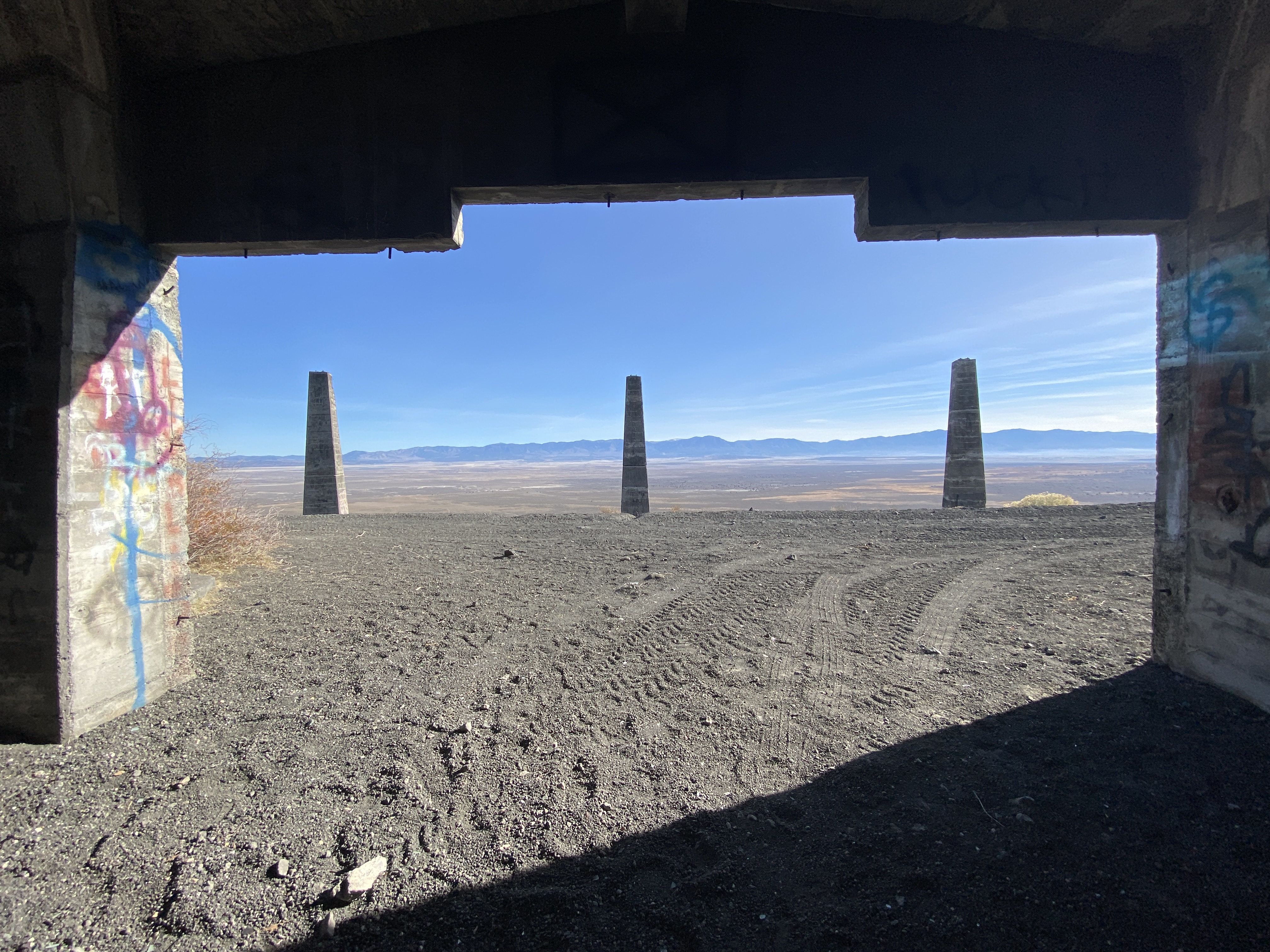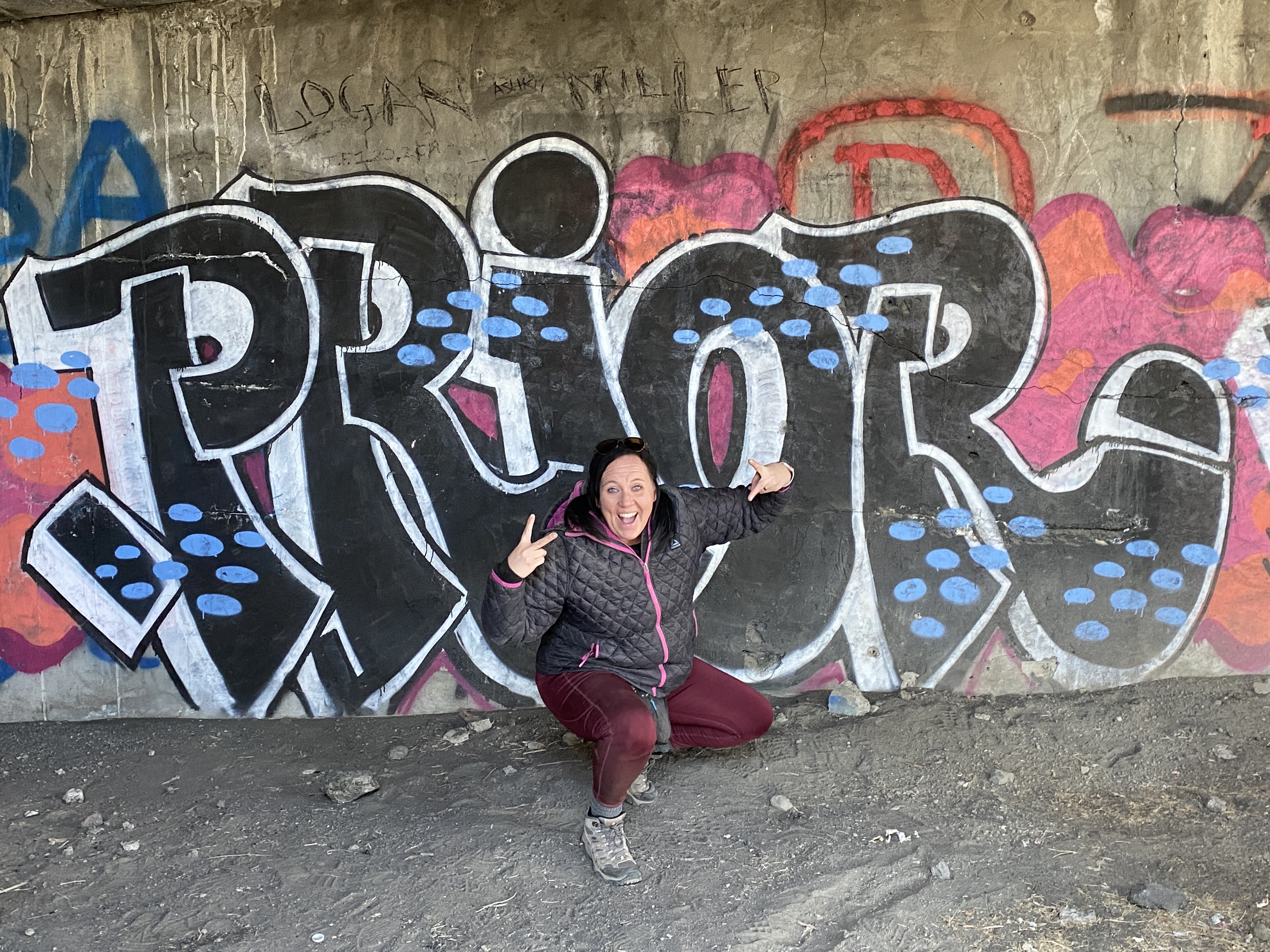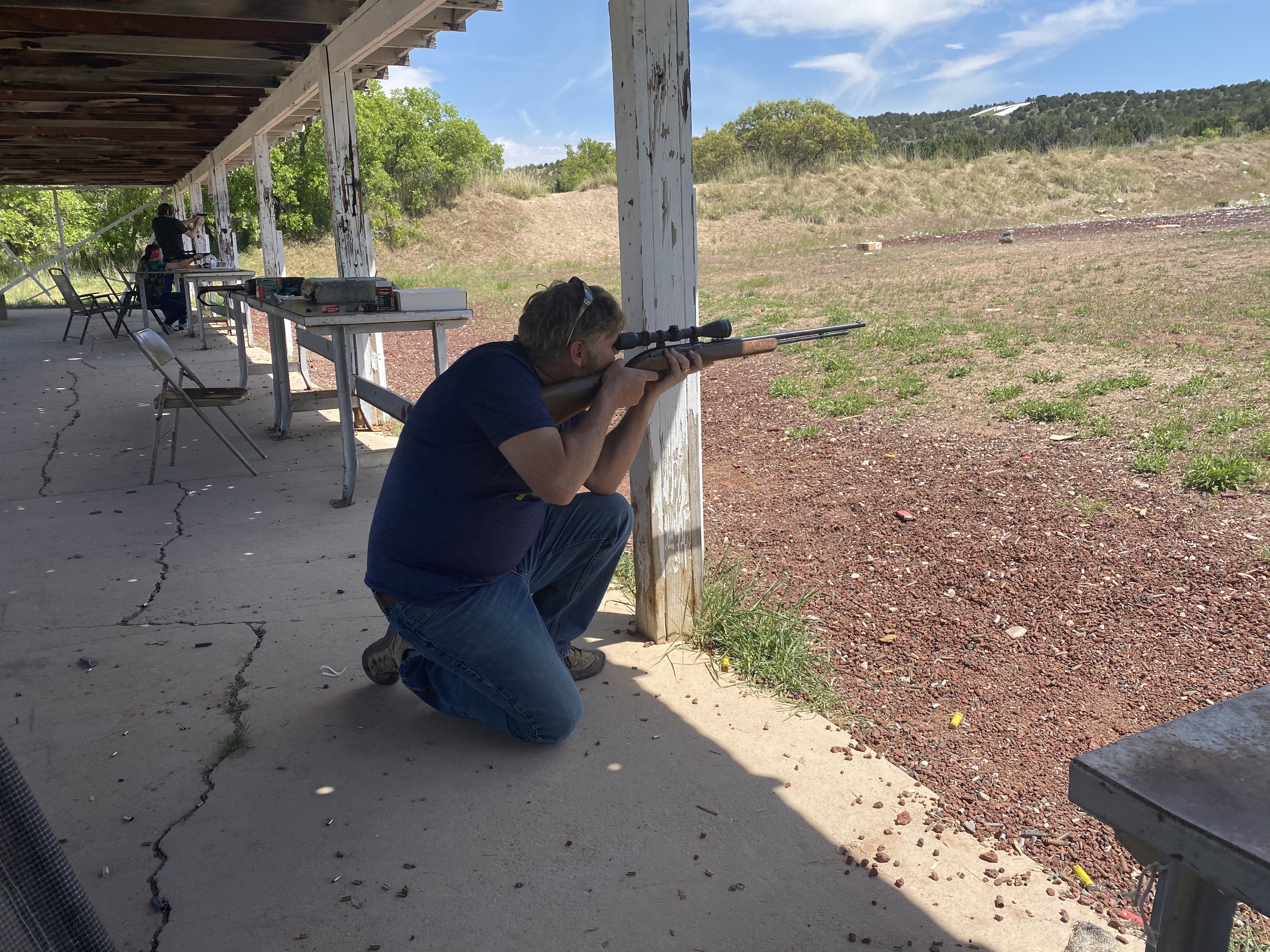Any Utahn who has made the trip down the I-15 corridor between the Wasatch Front and St. George is familiar with the rather barren non-descript landscape broken up only by the appearance of small rural towns every 60-90 miles which seem like a heaven sent Oasis for those of us with weak bladders! For years Fillmore, had always been a stop to relieve ourselves on our way to some “fun” location but during the Covid pandemic when the world was shutdown we took the time to stay a few days and it has now become a favorite weekend getaway for our family to go to re-enliven ourselves.
Named after Millard Fillmore, the thirteenth President of the United States, who was in office when Millard County was created, Fillmore was chosen by Brigham Young to become the Utah Territorial capital due to its central location in the new territory. In 1852 construction for the first territorial statehouse was begun and still stands and is open to visitors. But don’t make the mistake of making just a quick visit to the territorial statehouse and moving on; there are so many exciting things to do around this small town including exploring extinct volcanoes, exploring lava beds, hiking through astounding lava tubes, soaking in mineral hot springs, ATVing, shooting, and our personal favorite…exploring Utah’s very own Stonehenge!!
Things to Do
Fillmore
Utah State Territorial Museum
Located in downtown Fillmore, just off I-15, Utah State Territorial Statehouse State Park Museum is open Monday through Saturday from 9am-5pm and tells the story of the construction and various uses of Utah’s first statehouse. Although it was only used for one legislative session (1855) before the capital was moved to Salt Lake, you can give your kids a first hand look at government waste of taxpayer dollars of Olympic proportion and provide an accurate history of how whimsical government spending can be! Despite it’s large expense for one legislative session, the statehouse museum provides a unique look into both the native American and pioneer heritage of the region and even has a jail cell in the basement where you can point out to your children how humane your punishments truly are compared to the punishments of the late 1800’s! The museum is well worth the visit and only takes about an hour to see so it is a great stop even if you just need to relieve yourself on your trip to somewhere “fun”!







We first visited the Territorial Statehouse in 2005 when we had four little ones. We visited again in 2020 as (almost) empty nesters. What a difference 15 years can make. Sadly, sometimes our memories are the greatest museum.
Pahvant Butte
Approximately sixteen thousand years ago a large portion of Millard county was covered 300 feet under ancient Lake Bonneville. Large hot underground hot spots heated the earth beneath the ancient lake and 15,500 years ago a large underwater eruption occurred spewing ash and lava into the air causing large waves across Lake Bonneville and the lake bed was forced up to form a subaqueous volcano (fancy word for underwater volcano). When Lake Bonneville broke through it’s natural earthen dam near present day Downata, Idaho and emptied into the Snake River Valley and eventually out to sea one of the great wonders it left behind in addition to the Great Salt Lake was Pahvant Butte. This dormant volcano is just a short drive west of Fillmore (mostly on dirt roads) but is absolutely worth the drive. Pahvant Butte is really three treasures in one in that you can visit the dormant volcano, the Lace Curtain and Utah’s own Stonehenge all at one location!!! We love this place!!!

Pahvant Butte Dormant Volcano
I grew up in Utah and yet I never realized that the Southwest desert of Utah is covered in ancient, dormant volcanoes. Pahvant Butte is one of the best preserved examples of these volcanoes and allows visitors to drive right up into the crater of the volcano. You will want ATV’s or a high clearance vehicle to make this trip but there is a road that winds up and through the ancient volcanic rock right into the crater; how cool is that!!! As we drove up into the crater we saw several people sifting through the basaltic rock searching for various gems and minerals. Once inside the crater we explored the steep crater walls and weathered dome of the inside of the volcano wondering what it must have felt like to be standing here 15,000 years ago, just a few seconds ago in geologic time. It is incredible to just feel how insignificant we are compared to the great creative powers of nature and we stood in awe at this grand geological formation.



The Lace Curtain
It has been said that nature is the greatest artist, and the Lace Curtain located on the north side of Pahvant Butte is proof of this saying. A vertical cliff formed on the north side of the Pahvant Butte volcano this geologic wonder was formed by storm wave action from Lake Bonneville interacting with the volcanic tuff (lava spewed from volcano). The minerals from the groundwater of Lake Bonneville cemented with the tuff materials of the volcano and formed a white, lace like pattern seen on the cliff face today. This cliff is not only inspiring to see but we really enjoyed playing in the cracks and crevices of the rock formations. Again a high clearance vehicle is recommended to drive out to the Lace Curtain but it is worth the effort to see this incredible masterpiece of nature!!









Utah’s Stonehenge
Did you know Utah has its very own Stonehenge? And even cooler than that it is on the edge of the Pahvant Butte volcano’s crater!!! Okay it may not be an ancient Druid worship site but it is every bit as cool. From inside the crater if you look up on the edge to the east (you really can’t miss it) you will see what looks like circular stone pillars. In reality, they are not stone but square concrete pillars that are the remains of a 1923 failed wind generation project. Once on top, you will find not only the pillars but also the remains of what was to become a powerhouse as well. This site is not only incredible for the great views from the height but this is a great place for photographs. We spent an hour alone just being creative and taking fun photos posing as statues, gargoyles, and super models (okay maybe just subpar models). I think we had as much fun taking photos as we did with any other part of the day (and I hate taking photos). Just a word of advice, there is a trail leading up to the wind generator station from inside the crater that is extremely steep and dangerous, DO NOT ATTEMPT THIS TRAIL unless you have an ATV and are extremely experienced. There is a road to the station on the east side of the butte which is far safer although it still requires a high clearance vehicle (We have only seen ATV’s use it so if you have a car we recommend hiking up to the site). Whether you can ATV up or hike up this site is worth the visit, everyone we have taken here has loved it!!!










Black Rock Desert
Tabernacle Hill (Meadow) Lava Tubes
The Black Rock Desert covers 700 square miles in Millard County and includes Pahvant Butte as well as other fascinating geologic features. One of the most fascinating geologic features in the area are the lava tubes located at Tabernacle Hill. These geologic features are located just a few miles west of Fillmore and make for an amazing afternoon adventure. These large lava tubes were formed as hot lava flowed through the landscape hardening on the outside as it came in contact with the air and cooled on the exterior while continuing to flow on the interior forming these amazing tubes. The tubes are accessible by car although a high clearance vehicle is recommended and make sure you bring water with you as you explore the approximately half mile of tubes and the volcanic landscapes. There are several small severely eroded volcanoes located at Tabernacle Hill as well making this area a fun playground to explore!








The Cinders
Located between Pahvant Butte and Tabernacle Hill is a geologically fascinating landscape that is known as The Cinders. Also known as the Ice Springs Volcanic Field after the volcanic hill that produced them the basalt that forms this field erupted less than 700 years ago and is the youngest basalt flow in Utah. The Cinders are accessible via any vehicle as the road actually weaves around the flows as you drive between Pahvant Butte and Tabernacle Hill.


The Devil’s Kitchen
The Devil’s Kitchen fault forms a prominent escarpment for most of its length from the Cinders to the Pahvant Butte. The fault line is up to 60 feet high in places and exposes the columnar basalt that form from the cooling and contracting of thick lava. Numerous boulders along the fault have petroglyphs etched into their dark patina portraying both the geological and human history of the area.


Meadows Hot Springs
Meadows Hot Springs consists of three soaking pools located just outside the town of Meadows, Utah (about 4 miles south of Fillmore). The springs are located on private property but the owner has continued to allow access to these springs to the public. The springs are free but there are donation boxes to help the owner fund improvements to the site which is very popular and easily damaged by the crowds that gather here. The pools have various temperatures with the hottest spring being just over 100 degrees. The hottest spring has a depth of about 60 feet and bathers may attempt to dive down the suspended rope to see if they can reach the bottom. One of the other springs, which is the coldest of the three springs, has small fish and even a dock which make them enjoyable with the younger children. The springs are located just minutes off the interstate but we enjoy riding our ATV’s out to the springs to relax after a hard day of riding. In our opinion these are some of the best hot springs in Utah.




ATV Trails
Fillmore is an ATV enthusiasts dream as it provides an opportunity to ride both desert and mountain landscapes. To the west is the Black Rock Desert with Pahvant Butte, Meadows Hot Springs, the Cinders, the Devil’s Kitchen and the Tabernacle Hill lava tubes. Still further west are multiple rock hounding sites and the Dominguez-Escalante trail. To the east into the mountains is the Fillmore section of the Paiute Trail system passing through the mountains east of the city and connecting to many other communities along the trail system. So whether you like desert rides or mountain rides, you get both from one little town. Our favorite ride is to make a loop from Fillmore to Pahvant Butte then passing through Devil’s Kitchen and the Cinders on our way to the Tabernacle Hill Lava Tubes. From there we ride to Meadow’s Hot Springs and soak off the dust in one of the relaxing hot springs, returning to town to end the day. Rarely do you find so many interesting sites in one location so Fillmore really does have it all!


Shooting
Two miles east of town just past the city landfill (a highlight for my kids because they have an area to dump dead livestock) is the Fillmore Shooting Range. We took our firearms and clay pigeons and spent a few hours exercising our 2nd amendment right to bear arms by drilling the Brophy Family militia in preparation to fend off a Russian attack should it occur on the American homefront. I don’t care what your beliefs are about guns, nothing unites a family like a few hours at the gun range. If nothing else, it reinforces the belief that mom may not be authorized but she is trained on the use of deadly force so don’t push your luck!




Where to Stay
Fillmore
Fillmore does have a few hotels but none are exceptional. We have stayed in several when we make quick weekend trips and generally just find the best priced option as they are all similar. Fillmore lacks any exceptional restaurants and finding a place to eat on Sunday can be difficult. The best way to explore Fillmore, if you can, is camping. There are several campgrounds in town and dry camping available on BLM land. Our favorite place to camp is the Fillmore KOA. It is clean and up-to-date and you can ride directly out of the campground to any trail system.
We are especially fond of the KOA because we were caught in a snow storm on I-15 on our way to somewhere “fun” and had to try and wait out the storm in Fillmore along with everybody else. With the hotels all filled we called the KOA and in the middle of a blizzard they offered us a camping cabin and blankets even though they were closed for the season. The owners even helped dig us out and pushed our car out of the snow the next morning. We will always be thankful for their hospitality.


Summary
The small unassuming town of Fillmore has become one of our favorite weekend destinations. It is close enough to just about everywhere in Utah to make it just a couple hours drive and yet you get a whole lot of bang for your buck with so many interesting geological and historical locations packed so closely together. If you are looking to fill your weekend with adventure look no further than Fillmore to feel ALIVE!
